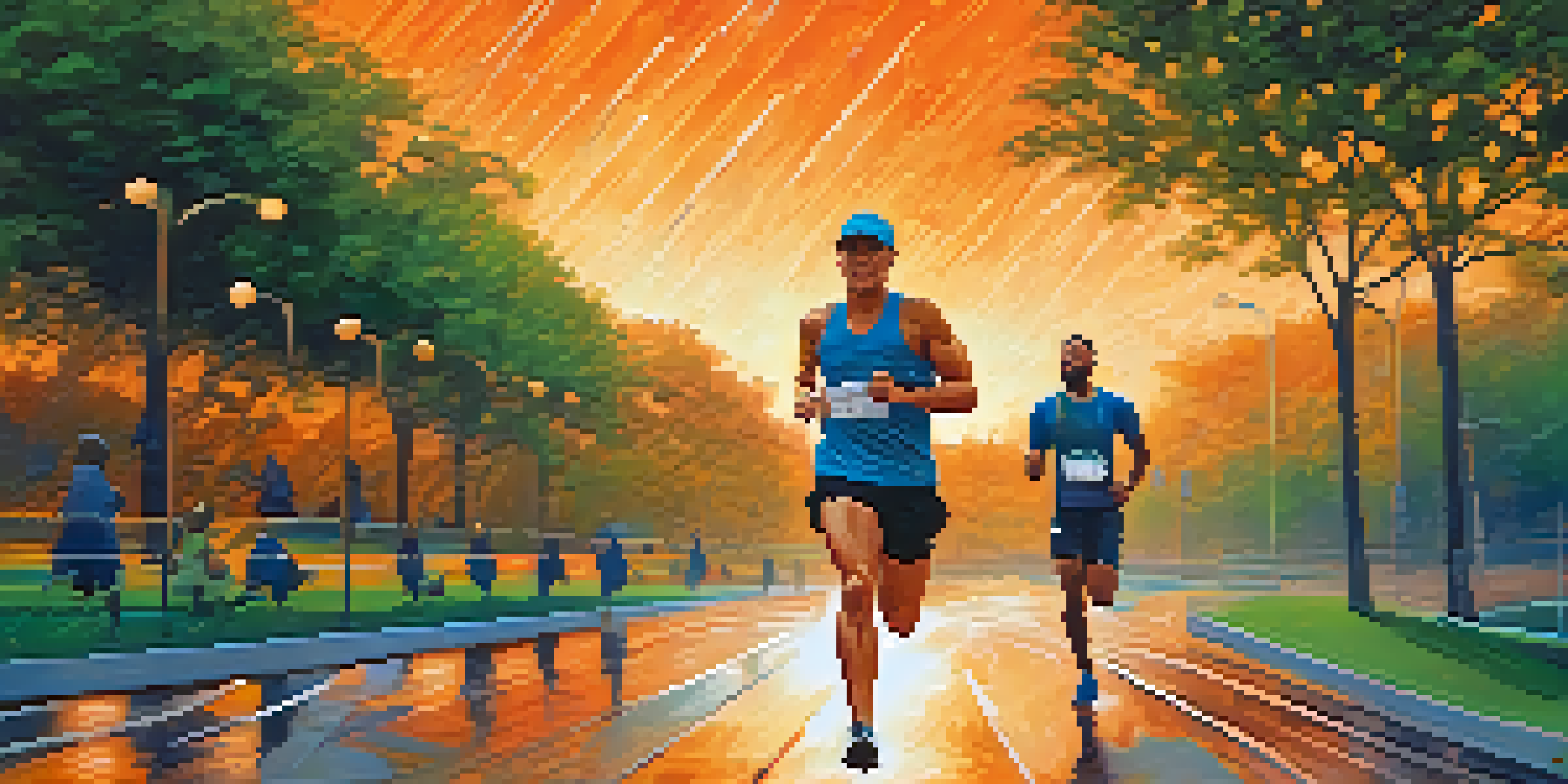The Use of Montage: Conveying Complex Ideas Quickly

What is Montage and Its Purpose in Communication
Montage is a filmmaking technique that combines various shots to create a cohesive narrative. It’s not just about pretty visuals; it’s about conveying emotions and ideas swiftly. By juxtaposing different images and scenes, filmmakers can evoke feelings or convey complex themes without lengthy exposition.
The essence of cinema is editing. It's what gives the film its power.
For example, a montage of a character training for a marathon can show their journey in just a few seconds, highlighting their struggles and triumphs. This method engages viewers, making them feel connected to the story without drowning them in dialogue. Essentially, montage distills experiences into digestible segments, making it easier for audiences to grasp intricate concepts.
In today’s fast-paced digital world, where attention spans are shorter than ever, montage serves as a powerful tool. It effectively communicates messages quickly and memorably, allowing creators to leave a lasting impact on their audience.
The Historical Context of Montage in Film
Montage has roots dating back to early cinema, with filmmakers like Sergei Eisenstein pioneering its use in the 1920s. Eisenstein believed that combining disparate images could create a new meaning, a philosophy that transformed storytelling in film. His famous work, 'Battleship Potemkin,' utilized montage to heighten emotional responses and emphasize themes of revolution.

As cinema evolved, so did the technique of montage, becoming a staple in various genres. Directors like Alfred Hitchcock and Martin Scorsese adapted these principles, using montage to build suspense or develop character arcs. This historical evolution showcases how montage has continually been refined to suit the narrative needs of filmmakers.
Montage Enhances Emotional Storytelling
By juxtaposing contrasting images, montage evokes powerful emotional responses, allowing viewers to connect deeply with the narrative.
Understanding this history not only highlights the importance of montage in film but also inspires contemporary creators. It reminds us that while technology and styles may change, the fundamental goal of storytelling remains the same: to connect with audiences.
How Montage Simplifies Complex Narratives
Montage excels at simplifying intricate narratives by breaking them into smaller, relatable parts. This technique allows creators to present multiple viewpoints or timelines simultaneously, providing a more comprehensive understanding of the story. For instance, a montage showing various characters’ reactions to a significant event can encapsulate the emotional spectrum in just a few moments.
Montage is the essence of cinema; it is the way we create meaning through the juxtaposition of images.
By condensing information, montage also helps maintain audience engagement. Instead of lengthy exposition that risks losing viewers’ interest, montages quickly convey essential plot points and emotions. This keeps the pacing brisk, ensuring that audiences stay invested in the narrative.
Ultimately, the ability of montage to distill complexity into clarity is what makes it so effective. It transforms intricate ideas into visual stories that resonate, making even the most complicated themes accessible to a broader audience.
Emotional Resonance: The Power of Visual Juxtaposition
One of the most compelling aspects of montage is its capacity to evoke emotions through visual juxtaposition. By placing contrasting images side by side, filmmakers can create powerful emotional responses in viewers. For example, a montage showing a joyous wedding ceremony followed by a somber funeral can evoke a profound sense of life's duality.
This technique enhances storytelling by inviting viewers to draw their own conclusions and emotions. Instead of telling the audience how to feel, montage allows them to experience the emotional weight of the juxtaposed images. This engagement fosters a deeper connection with the narrative, making it more memorable.
Historical Roots of Montage in Film
Montage has evolved from early cinema, with pioneers like Eisenstein demonstrating its potential to create new meanings and enhance storytelling.
In essence, the emotional resonance created through montage lies in its ability to stimulate the audience's imagination and empathy. It transforms passive viewing into active interpretation, making the storytelling experience richer.
Montage in Modern Media: Beyond Traditional Film
While montage is often associated with traditional film, its application has expanded into modern media, including television and online platforms. In shows like 'Breaking Bad,' montages are used to condense time and highlight character development effectively. This technique allows for more dynamic storytelling within limited episode durations.
Moreover, social media platforms like TikTok and Instagram have embraced montage in short-form content. Creators use quick cuts and visual sequences to tell stories, share experiences, and convey complex ideas rapidly. This evolution demonstrates how montage adapts to fit the needs of contemporary audiences.
As we navigate a world increasingly driven by visual communication, the relevance of montage continues to grow. It remains a vital tool for creators aiming to communicate effectively in an age where brevity and impact are paramount.
Techniques for Creating an Effective Montage
Crafting a compelling montage requires a thoughtful approach to imagery and pacing. First, it's essential to choose visuals that convey the intended message, whether through emotion, action, or symbolism. Each shot should serve a purpose, contributing to the overall narrative without unnecessary clutter.
Additionally, pacing plays a crucial role in the effectiveness of a montage. A well-timed sequence of images can create rhythm and flow, enhancing the emotional impact. For instance, quick cuts can evoke excitement, while slower transitions may induce reflection, depending on the desired outcome.
Montage's Role in Modern Media
In today's fast-paced digital landscape, montage has adapted to various platforms, effectively conveying complex ideas in a succinct manner.
Finally, sound also enhances the montage experience. Pairing visuals with music or sound effects can amplify emotions and create a more immersive experience for viewers. By combining these elements thoughtfully, creators can craft montages that resonate deeply with their audience.
The Future of Montage in Storytelling
As technology continues to evolve, the future of montage in storytelling looks promising. With advancements in virtual reality and interactive media, new possibilities for montage techniques are emerging. Imagine a virtual environment where viewers can choose their own montage sequences, experiencing the story from multiple perspectives.
Furthermore, as audiences become more accustomed to fast-paced content, the demand for effective montages will likely grow. Creators will need to innovate continually, finding fresh ways to engage viewers while conveying complex ideas succinctly. This could lead to even more creative uses of montage across diverse platforms.

In conclusion, the future of montage is not just about preserving its traditional roots but also exploring its potential in new mediums. As storytelling evolves, so too will the ways we use montage to communicate, ensuring it remains a vital tool for creators.